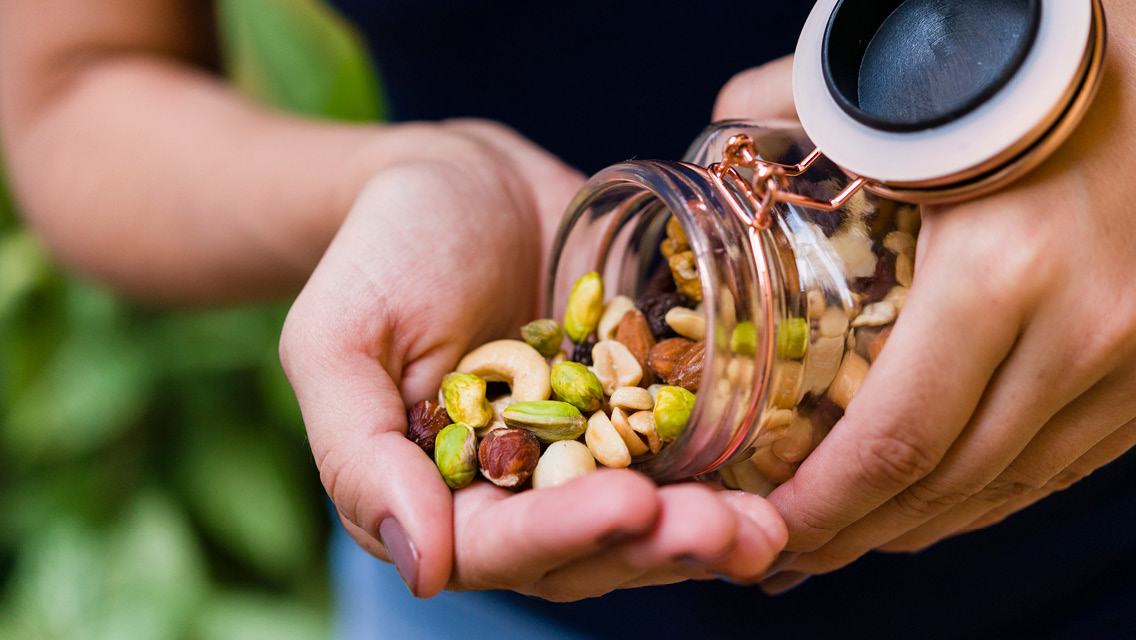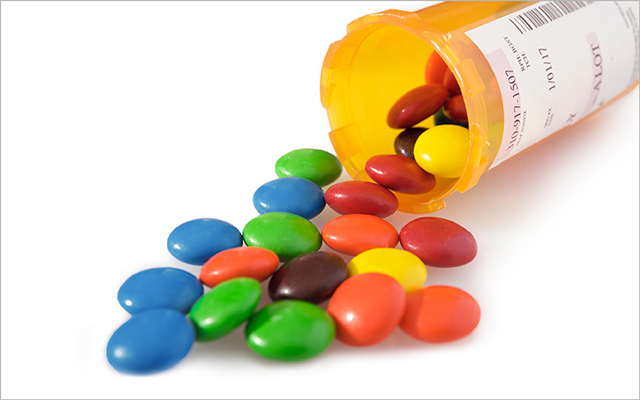Americans are on a bona fide sugar binge. During the past 25 years, the average person’s intake of sugar and other natural sweeteners increased from 123 to as many as 160 pounds a year. That breaks down to more than 20 teaspoons of the added white stuff per person per day. And our collective sweet tooth is growing. For the past decade, Americans’ sugar consumption has edged upward at the average rate of nearly 2 percent a year.
Why the sugar obsession? The vilification of fat may be partly to blame.
During the low-fat frenzy of the past couple of decades, oils were squeezed out of processed foods – and sugar was pumped in to make reduced-fat foods tastier. It seems clear now that we effectively traded one dietary evil for another.
New research is revealing disturbing links not just between blood-sugar levels and obesity, but also between sugar and inflammation. Inflammation, of course, has been implicated as a major factor in a number of vitality zapping diseases, from cancer and diabetes to atherosclerosis and digestive disorders.
Whether you’re concerned with managing your weight, your health, or both, it makes sense to evaluate the impact your sugar habit could be having on your body.
The Refined-Carb Connection
On the spectrum of dietary dangers, processed sugars are on a par with unhealthy fats. “High-fructose corn syrup is the primary cause of obesity in our culture,” says Elson Haas, MD, author of Staying Healthy with Nutrition. “Our bodies simply aren’t built to process all that sugar.”
Still, to date, sugar doesn’t have nearly as bad a reputation as it probably deserves. One of the reasons it slips under the radar is that connecting the dots between sugar and disease requires widening the nutritional net to include all refined carbohydrates (like processed flours, cereals and sugars of all sorts). This may seem like a fine point, but it’s an important distinction.
Most dietary sugars are simple carbohydrates, meaning that they’re made up of one or two sugar molecules stuck together, making them easy to pull apart and digest. Complex carbohydrates, like those found in whole grains, legumes and many vegetables, are long chains of sugar molecules that must be broken apart during digestion, therefore offering a longer-lasting surge of energy. The presence of naturally occurring fiber, protein and fat in many whole foods further slows the sugar-release process.
The more processed and refined the carbohydrate, as a rule, the faster it breaks down in the digestive system, and the bigger the sugar rush it delivers. That’s why refined flours, sugars and sugar syrups pose such a problem for our systems.
The body is exquisitely designed to handle small amounts of sugar. But refined carbs deliver a larger rush than our bodies were designed to accommodate, or even cope with. In ancient times, hunter-gatherers coveted the occasional piece of fruit or slab of honeycomb as a rare treat and source of rapid-fire energy for, well – hunting and gathering.
Today, sugar lurks behind most cellophane wrappers, and the energy it provides is more likely to get socked away on our hips than burned while stalking dinner. Being active goes a long way toward vanquishing excess sugar in the bloodstream, but it doesn’t negate the need to watch your intake. To make matters worse, unlike the fruit sugar (fructose) our ancestors savored, today’s sugary treats are made with refined sugars (usually some derivative of table sugar or high-fructose corn syrup), which can overwhelm the body’s ability to balance blood sugar.
“Refined sugar is a genetically unfamiliar ingredient,” says Jack Challem, a nutrition researcher and author of The Inflammation Syndrome. “A lot of health problems today are the result of ancient genes bumping up against modern foods.”
“Refined sugar is a genetically unfamiliar ingredient,” says Jack Challem, a nutrition researcher and author of The Inflammation Syndrome. “A lot of health problems today are the result of ancient genes bumping up against modern foods.”
To wrap your head around sugar’s destructive powers, it helps to understand how the body reacts when it meets the sweet stuff. With each gulp of a sports drink or soda, for instance, simple carbohydrates are quickly dismantled into simple sugar molecules (glucose) that pass directly into the bloodstream. As a result, blood sugar rises markedly. To bring levels back to normal, the pancreas releases insulin, which lowers blood-sugar levels by escorting glucose out of the bloodstream and into cells.
If energy needs are high at the time sugar hits the bloodstream, that sugar is put to good use. But a too frequent or too heavy supply of sugar pushes the pancreas into overdrive, causing it to release too much insulin – a spew instead of a squirt. And an excessive release of insulin spells inflammatory trouble.
Sugar and Inflammation
A newly understood phenomenon, inflammation underlies modern health scourges, from heart disease to obesity to diabetes (see “How Chronic Inflammation Affects Your Health” for more). “Sugar can play a role in inflammatory diseases,” says Dave Grotto, RD, a spokesperson for the American Dietetic Association. “Poor regulation of glucose and insulin is a breeding ground for inflammation.”
Under normal conditions, inflammation helps the body rebound from injury. For instance, if you cut yourself shaving, white blood cells race to the scene to mop up the wound, destroy bacteria and mend tissue. But when the injury is deep inside the body, such as inside the blood vessels of the heart, hidden inflammation can trigger chronic disease, and experts are only beginning to understand how sugar fans the flames.
In the development of heart disease, the type of carbohydrate in your diet may be as important as the type of fat, says Walter Willett, MD, professor of epidemiology and nutrition at the Harvard School of Public Health (HSPH) and author of Eat, Drink and Be Healthy. The more refined carbs you eat, the more likely you are to be supplying your body with more sugar than it can handle with healthy results.
That point hit home when Willett and a team of HSPH nutrition researchers looked at diet and health history data from more than 75,500 women who took part in the Nurses’ Health Study. At the start of the study in 1984, all the nurses were given a clean bill of health. Ten years later, 761 had either been diagnosed with or died from heart disease. When researchers distilled the numbers, they found a telling parallel between women eating a high-glycemic diet of refined carbohydrates and those with heart disease. An even more disturbing trend was within the group of women at risk for heart disease: Those who ate the most carbohydrates – including sugars – doubled their risk of heart attack compared to those with diets only moderately high in carbohydrates.
Nutrition experts stress that there’s no point avoiding the carbs that come from eating a balanced, healthy, whole-foods diet. But there is plenty of good reason to avoid the refined carbs that quickly turn to sugar in the body.
Such sugars deliver more excess (and mostly empty) calories, which the body then converts to triglycerides, a key indicator of heart disease.
Sugar-rich diets stress the heart in other ways, too. When blood sugar is high, the body generates more free radicals. Rogue molecules that pinball through the body damaging cells, free radicals stimulate the immune response, which can inflame the lining of the blood vessels leading to the heart. And the damage doesn’t stop there.
How Sugar Becomes Fat
Until recently, the connection between sugar and obesity was murky. Dietitians assumed that in the battle of the bulge, sugar was a lesser foe than dietary fat. But new studies reveal sugar may play a bigger role in weight gain than suspected. And carrying excess body fat further reduces your body’s ability to manage its sugars effectively.
When scientists want to measure the effects of sugar on health and weight, they turn to the biggest source of sugar in American diets: soft drinks.
Harvard’s Willett says. “Sugar is an important source of excess calories in the American diet — a serious problem given the obesity epidemic.”
A pilot study published in the March 2006 issue of Pediatrics showed for the first time that simply cutting back on sugary drinks can reduce excess body fat. Researchers at Children’s Hospital Boston enrolled 103 sugar-guzzling teenagers, divided them into two groups (an intervention and a control), and measured the effects of the drinks on their weight. For almost six months the intervention group got weekly home deliveries of their choice of noncaloric drinks, including bottled water, iced tea and diet sodas. The scientists called the teens monthly to check in and cheer them along. The control group went about their normal drinking habits. In the end, the teens in the intervention group cut their intake of sugary drinks by 82 percent and lost weight.
Although the average weight loss was “modest,” the teens who weighed the most at the beginning saw the biggest losses, roughly a pound a month. This study goes to show that reducing sugar intake, particularly sugar-sweetened beverages, is one of the best ways to improve one’s diet, Harvard’s Willett says. “Sugar is an important source of excess calories in the American diet — a serious problem given the obesity epidemic.”
Cutting Back
The best way to reduce unhealthy sugars in the diet is to consume fewer processed foods and drinks in general, and refined carbs and sugars in particular. Fuel your energy demands with a slower-burning balance of proteins, healthy fats and whole-food carbs.
For a healthier alternative to sugars that you add at the table or kitchen counter, dietitian Grotto suggests switching to sweeteners that are higher in naturally occurring fructose, such as agave syrup or malted barley, which have a less dramatic effect on blood sugar and insulin. Still, you should limit your intake to no more than 3 teaspoons a day. “These sweeteners won’t elicit the glycemic response of table sugar,” he says, “but you shouldn’t eat them by the gallon.”
For sweetening tea or cereal, you might also try stevia, a natural calorie-free herb made from a South American shrub. It’s sold at health-food stores as a dietary supplement and is widely available in both powder and liquid forms.
Take heart: Enjoying a limited amount of refined sugar isn’t going to devastate an otherwise consistent healthy-living regimen—but that doesn’t mean you should keep swallowing it indiscriminately. “The sugar highs and lows brought on by high-carbohydrate foods create a dangerous addiction,” researcher Challem notes. And the sooner we break our addiction to sugar, the better off our bodies will be.
This article has been updated. It originally appeared in the July/August 2006 issue of Experience Life.





This Post Has 0 Comments